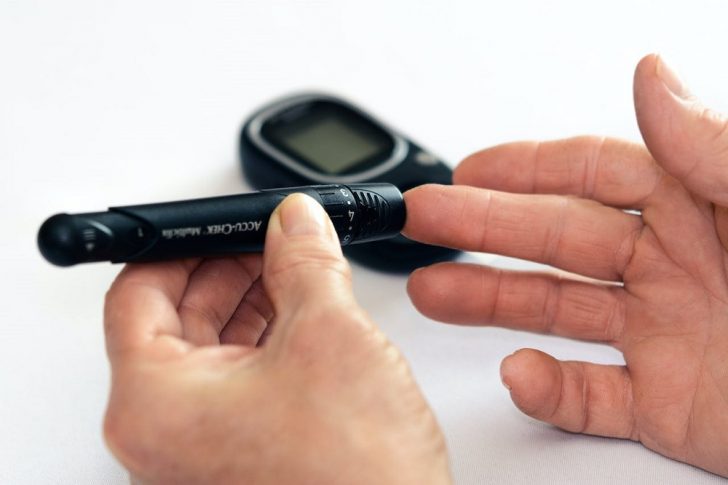
A Game-Changer for Weight Loss in Type 2 Diabetes

Counting time is easier than counting calories, and for people with Type 2 Diabetes (T2D), this could be a game-changer in their weight loss journey.
A recent study published in JAMA Network Open reveals the surprising effectiveness of time-restricted eating, also known as intermittent fasting, in helping individuals shed pounds and improve their long-term blood sugar levels. In this article, we’ll explore the findings of this study and why time-restricted eating might be a promising strategy for those battling T2D.
Innovative Weight Loss Strategies Are in Demand
Type 2 Diabetes is a growing health concern, affecting approximately 1 in 10 adults in the United States, according to the Centers for Disease Control and Prevention (CDC). Alarmingly, if current trends persist, this number could rise to 1 in 3 people by 2050. Given these statistics, innovative weight loss strategies are urgently needed to combat this epidemic.

Pixabay/ Pexels | If you’re new to intermittent fasting, it’s a good idea to start slowly and gradually extend fasting periods to allow your body to adapt.
Over 90 Percent of Participants Were People of Color
The study, conducted with 75 participants, aimed to assess the effectiveness of time-restricted eating compared to traditional calorie restriction. Participants had an average age of 55, an average BMI of 39, and an HbA1C level of 8.1 percent. Time-restricted eating involves consuming food and calorie-containing beverages only during specific hours of the day, typically within a designated eating “window.”
Notably, the study included a diverse group, with 40 percent of participants being Hispanic, 53 percent Black, 5 percent white, and 1 participant of Asian descent. This diverse representation is crucial because T2D is more prevalent among certain ethnic groups, making it important to evaluate the effectiveness of strategies like time-restricted eating within these populations.
Time-Restricted Eating Outperforms Calorie Counting
The participants were divided into three groups: those practicing time-restricted eating, those adhering to calorie restriction, and a control group maintaining their usual eating habits.
The time-restricted eating group had an eight-hour eating window from 12 p.m. to 8 p.m. daily, without calorie counting or dietary restrictions. During fasting, they consumed water and calorie-free beverages, maintaining a daily eating log.

PhotoMIX Company/ Pexels | The study’s results highlight the potential of time-restricted eating as a viable weight loss strategy for individuals with Type 2 Diabetes.
On the other hand, the calorie restriction group aimed to reduce their calorie intake by 25 percent based on their baseline energy needs. This meant cutting 500 calories from their daily intake if their baseline energy need was 2,000 calories. They received personalized meal plans and tracked their food intake using an app.
After six months, the results were striking. The time-restricted eating group lost 3.6 percent of their body weight, while the calorie-counting group lost 1.8 percent, both surpassing the control group. Intriguingly, both groups achieved a similar reduction in HbA1C levels by 0.9 percent.
Why Did Time-Restricted Eating Triumph?
Several factors contributed to the success of time-restricted eating. First, adherence was higher in the time-restricted eating group, possibly because many participants had previously struggled with calorie-restriction diets, making time-restricted eating an easier approach.
Secondly, participants in the time-restricted eating group found it easier to follow, while many in the calorie-restriction group reported difficulties. Lastly, the time-restricted eating group reduced their daily calorie intake by 313 calories on average, compared to 197 calories in the calorie-restriction group.

Julien Bachelet/ Pexels | Fasting periods can help regulate appetite hormones
Weight Loss Compared to New Weight Loss Drugs
Although the weight loss achieved through time-restricted eating was modest (less than 4 percent), it’s important to note that the results can be considered in the context of available medications like Ozempic, Wegovy, and Mounjaro, designed for both diabetes management and weight loss. These medications often yield more significant weight reductions.
Similar Blood Sugar Improvements
Surprisingly, despite the differences in weight loss, both groups exhibited comparable reductions in HbA1C and mean glucose levels. This might be attributed to similar reductions in visceral fat and waist circumference, both important factors in T2D management. Reducing belly fat is not only linked to diabetes risk but also associated with a higher risk of heart disease and stroke.
Consult Your Doctor
The study found no serious adverse events during the six-month duration. The occurrences of both hypoglycemia (low blood sugar) and hyperglycemia (high blood sugar) were similar across all groups.
However, it’s important to remember that this study was relatively small and serves as a proof of concept. Individuals with T2D interested in time-restricted eating should consult their healthcare professionals before embarking on this dietary approach.
More in Well-Being
-
`
6 Unique Approaches to Finding Meaning in Life
Have you ever gazed at a starry sky and pondered the vastness of existence, wondering what your place is in it...
March 5, 2024 -
`
Want to Look Like a Royal For a Week? Try These Creative Budget-Friendly Tips
Have you ever caught yourself daydreaming about strolling through the halls of a grand palace, donning an outfit that screams elegance,...
February 26, 2024 -
`
Famous Celebrities Who Admitted to Mental Health & Personal Struggles
In a world where fame often seems like the ultimate achievement, the glitz and glamour often overshadow the personal struggles many...
February 19, 2024 -
`
Mastering Medicare – 5 Expert Tips for Maximum Benefit
Are you ready to harness the full potential of your Medicare benefits? From managing your prescriptions to staying on top of...
February 12, 2024 -
`
Struggling With Bipolar Disorder? Lifestyle Changes You Should Make for Stability
Introduction: The Rollercoaster of Bipolar Disorder Living with bipolar disorder is akin to riding an emotional rollercoaster. One moment, you’re soaring...
February 7, 2024 -
`
Swipe Right…or Left? 3 Crucial Questions Before Your Next Beauty Haul
Remember that thrill of unboxing a shiny new beauty product? The promise of glowing skin, luscious locks, or eyes that sparkle...
February 3, 2024 -
`
Tammy Slaton of 1000-Lb. Sisters Opens Up About Her Lesbian Journey After Losing Husband
In a world where authenticity often takes a backseat, Tammy Slaton, the spirited personality from “1000-Lb. Sisters,” brings a refreshing dose...
January 27, 2024 -
`
From Registration to Receiving: How to Enroll in Toys for Tots
The holiday season is a time of joy and celebration, but for families facing financial challenges, ensuring that their children experience...
January 16, 2024 -
`
How to Practice Self-Care? 5 Tried & Trusted Tips
Self-care is a buzzword that has been tossed around a lot lately, but what does it really mean? At its core,...
January 9, 2024















You must be logged in to post a comment Login